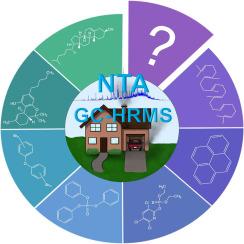Non-target screening analysis of hazardous noxious substances using gas chromatography-quadrupole time-of-flight mass spectrometry
Q2 Environmental Science
引用次数: 0
Abstract
The forensic investigation of hazardous noxious substances (HNS) is paramount for an effective response to chemical spill emergencies and other accidents. Analyzing unknown emergency samples poses a challenge due to the limited availability of background information, making the selection of appropriate sample preparation and analytical methodologies difficult. The utilization of high-resolution mass spectrometers (HRMS) in screening both target and non-target substances proves instrumental in revealing hazardous substances that may be overlooked alongside the intended analytes. In this study, a gas chromatography-quadruple time-of-flight mass spectrometer (GC-QTOF-MS) was employed to identify numerous organic compounds in an indoor dust sample. The compounds detected encompassed normal alkanes, fatty acids (saturated and unsaturated), alcohols, phenols, sterols, drugs, polycyclic aromatic hydrocarbons (PAHs), pesticides, flame retardants (such as polybrominated biphenyl ethers, PBDEs), plasticizers (such as phthalates and phosphates), among others. Notably, concentrations of n-alkanes, fatty acids, and phthalates were relatively high, while PAHs and pesticides were present at trace levels. The application of GC-QTOF-MS provides a swift and confirmative approach for analyzing target, suspect, and non-target compounds in both routine and emergency scenarios. This methodology proves invaluable in enhancing our capability to comprehensively assess and address chemical incidents, ensuring a more thorough and accurate response.

利用气相色谱-四极杆飞行时间质谱对有害有毒物质进行非目标筛选分析
有害有毒物质 (HNS) 的法医调查对于有效应对化学品泄漏紧急情况和其他事故至关重要。由于可获得的背景信息有限,分析未知的紧急样品是一项挑战,因此很难选择适当的样品制备和分析方法。事实证明,利用高分辨率质谱仪(HRMS)筛查目标物质和非目标物质有助于发现可能与目标分析物一起被忽略的危险物质。本研究采用气相色谱-四重飞行时间质谱仪(GC-QTOF-MS)来鉴定室内灰尘样本中的多种有机化合物。检测到的化合物包括正烷烃、脂肪酸(饱和和不饱和)、醇类、酚类、甾醇、药物、多环芳烃(PAHs)、杀虫剂、阻燃剂(如多溴联苯醚,PBDEs)、增塑剂(如邻苯二甲酸盐和磷酸盐)等。值得注意的是,正构烷烃、脂肪酸和邻苯二甲酸盐的浓度相对较高,而多环芳烃和杀虫剂的浓度则处于痕量水平。GC-QTOF-MS 的应用为分析日常和紧急情况下的目标、可疑和非目标化合物提供了一种快速、确证的方法。事实证明,这种方法对于提高我们全面评估和处理化学事故的能力,确保做出更彻底、更准确的反应,具有不可估量的价值。
本文章由计算机程序翻译,如有差异,请以英文原文为准。
求助全文
约1分钟内获得全文
求助全文
来源期刊

Environmental Advances
Environmental Science-Environmental Science (miscellaneous)
CiteScore
7.30
自引率
0.00%
发文量
165
审稿时长
12 weeks
期刊介绍:
 求助内容:
求助内容: 应助结果提醒方式:
应助结果提醒方式:


